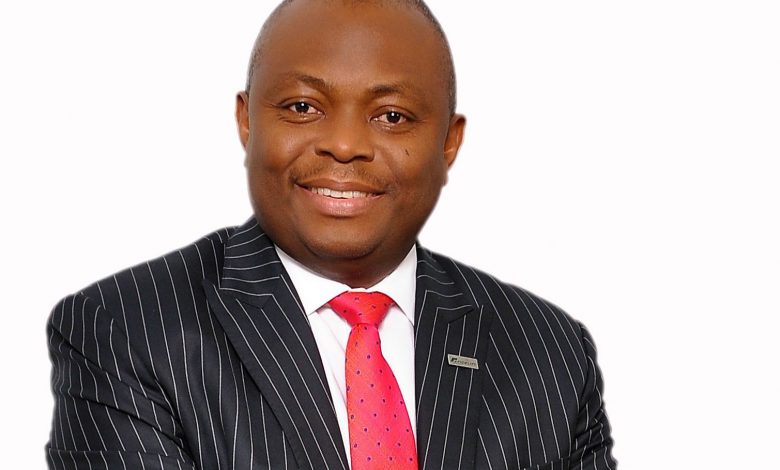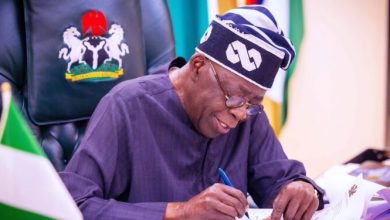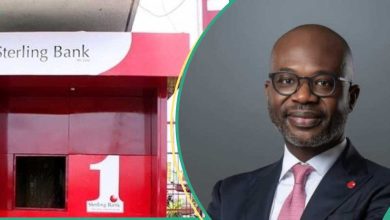HOW FIDELITY BANK EXPANDS PROFIT , DELIVERS HIGH RETURNS

Fidelity Bank Plc ,Nigeria’s most profitable Tier 2 lender , outperforms market , leversges expenses to wrench up the bottom line.
In the first nine months of 2020 ,the operating environment was unarguably intemperate, fraught with plenty of uncertainties and hick-ups: ; the economy was in bad shape under the claws of Covid 19 pandemic. ; the social and political environment deleterious, the banking industry highly competitive and the global economy too, not impressive
The negative impacts on corporate organizations were overwhelming .Declining margins ,falling market share and stagnant growth were the signals that litteed the corporate landscape. However, some innovative leaders and managers navigated their terrains with better ingenuities for necessary immunities against the storms of time .Nnamdi Okonkwo ,Chief Executive Officer of Fidelity Bank Plc was one them . He mastered the art and was handsomely rewarded
Although the terrain became a hard nut, he has equally developed an iron teeth. By hauling up net interest income by approximately 29 percent to N75,000 billion from N 58246 billion, Fidelity Bank showed that it’s not what you get but what you make out of it that matters The first hard nut posing a challenge to the bank’s management was the difficulty of growing its revenue . The environment became so competitive that in the last few years that gross earnings and profits have become lethargic It was so bad that the bank’s gross earnings rose only marginally or declined . It is a pointer to the fact that the economy is depressed and the propensity to save is rather weak
For Fidelity Bank the interest income marginally slumped It had a slip by 8.5 percent to N121,250 billion from N132558 billions ,a potential spoiler . This was partly responsible for a 3.7 percent slump in the revenue or the top line ..The bank’s gross earnings dropped year-on-year (Y-o-Y) by -3.74%, from N161.06bn in year-to-date (YTD) September 2019 to N155.03bn in YTD September 2020. This was majorly driven by a -24.77% Y-o-Y fall in fees and commission income, despite the +28.76% Y-o-Y growth in net interest income .Okonkwo ,indeed, was oblivious of the challenge. .He explained that the drop in Gross Earnings was due to the decline in interest and similar income caused by lower yields and drop in fee income. “Net fee income declined by N1.3bn largely due to a reduction in FX related income on account of the revaluation gains recorded in H1 2020. . However , the management was smart enough to snatch victory from the jaw of defeat . After suppressing interest expenses by 25 percent driving it down to N57, 469 billions from N76,870 billion ,its net interest income , which is a guide to how well a bank manages its interest rates it pays for borrowing and lending ,jumped seismically by 28.8 percent to hit Nl75,000 billions from N58,246 billions in the corresponding third quarter of 2019 .
Moreover, the bank’s cost-to-income for the period declined to 66.30% from 71.7% reported in YTD September 2019 but operating income rose Y-o-Y by +3.09% while the lenders other operating incomes increased by +20.91% To deliver the above impressive leaps a 64.9 percent in other interest income which increased from N2,558 billions in the third quarter of 2019 to N4,219billions could not be waived aside
Sequel to the above management dexterity those potential spoilers were not enough to tame and stop the fortunes of Fidelity Bank from having a positive outlook at a pretax level .
With a whopping jump in the bank’s other operating income and its ability to rein operating expenses , the bank registered a positive pre tax profit of N21,348 billions against N20,598 billions in the similar time in 2019 Profit before tax rose by +3.64% Y-o-Y, from N20.59bn in the corresponding period of the previous year to N21.35bn, the growth in profit before tax was majorly driven by a +20.91% Y-o-Y increase in other operating income despite the +3.09% increase in other operating expenses
.Moreover, a 39 percent decline in the income tax gave a further boost to the bank’s bottom line as the profit after tax inched up by 7.1 percent as the absolute amount registered hit N20,406 billions against N19,056 billions in the corresponding period last year. The above gallant performance impacted visibly on its margins. Its pre tax margin improved from 12.7 percent in 2019 to 13.7 percent in the third quarter of 2020 .In the same way, the net interest margin was lifted to 13.3 percent in 2020 from 11.8 percent in 2019 “Our 9 months results reflect our resilient business model, particularly in a very challenging operating environment. We worked closely with our customers to gradually recover from the economic impact of the pandemic and the attendant effect of the lockdown” said Fidelity Bank CEO, Mr. Nnamdi Okonkwo
The bank has continued to outperform both the market and the industry in various dimensions . The bank’s stock price has appreciated 42 percent since the beginning from September,8,2020 this year from N1.80 to N 2.56 in November 6 ,2020 to underscore investors and analysts’ belief in the growth potential of the bank This may be misplaced .Fidelity Bank is not significantly volatile than the rest of Nigerian stocks over the past three months typically moving at plus /minus 6 percent and its weekly volatility has been stable over the past one year . The bank’s impressive earnings power and its valuation multiples have continued to drive its market performance in the last few years . In the first nine months of 2020, its earnings per share stood at N70 compared N66 in the corresponding period of last year, a 6.1 percent jump The bank is adjudged to have quality earnings as its net profit results are believed by analysts to be a fair reflection of the company’s performance for that period. Its earnings have grown significantly by 21.7 percent per year over the past five years while its earnings growth over the past year at 60.4 percent exceeded its five years average of 21.7 percent and the banking industry which grew at 16 .3 percent. .
.
Analysts believe that Fidelity Bank is good value based on its 2.2x Price Earnings, PE , Ratio when compared with both industry and market of 3.6x and 7.6 x respectively. Its PE growth ratio of 0.2x and Price to Book ratio of 0.3x are also adjudged to be good value when compared to the industry 0.4x ratio. Its PE ratio of 2.2x times multiple indicate that investors are willing to part with more to own the bank’s stocks. It’s difficult not to do so since the bank delivered higher Returns on equity and assets Its Return On Equity, ROE, of 12.7 and Return On Assets, ROA ,of 1.3 percent is above 1.1 percent of the industry. Also, its current net profit margins at 28.5 percent are higher than last year’s 19.3 percent.
Its earnings power has continued to its yield strongly. The bank’s current dividend yield of 7.78 percent is higher than the bottom 25 percent of dividend payers in the Nigerian market at its 3.88 percent. Moreover, dividend payments have increased over the past ten years and is well covered by earnings. The above performance profile has continued to drive its market performance and outperform both the industry daily and on yearly basis .. The bank outperforms both the industry and the market with its 2.4 percent daily and 40.4 percent yearly shareholders returns compared to the daily industry and market returns of 1.4 percent and 1.9 percent as well as yearly returns of 10.4 percent and 16.4 percent respectively Fidelity Bank exceeded the industry which returned 11.4 percent over the past year and the market with a return of 14.4 percent. Its five year of 83.6 percent and 3year return of 53 percent exceeded the industry 20.2 percent and a 18.8 percent negative returns respectively.
Fidelity Bank earnings of 13.9 percent per year are forecast to grow faster than the market 11 percent per year. However, its earnings forecast of 13.9 percent per year is below the saving rate of 14.3 percent
The bank’s balance sheet was robust as the loan to deposit ratio, liquidity ratio and capital adequacy ratios were 44.2 per cent, 72.0 per cent and 25 per cent respectively, all well above the regulatory threshold. . Fidelity Bank financial health is believed to be very impressive by analysts. Although its assets to equity of 9.8 percent is adjudged to be low , 65 percent of its liabilities are made up of primarily low risk sources of findings . It also has appropriate levels of loans to assets at 49 percent and 85 percent of loans to deposit. Its 4.8 percent level of bad loans is also within the regulatory minimum of 5 percent. Cash and balances with the Central Bank also increased from N4.18 billion to N6.34 billion, indicating an increase of 51.8% Customer Deposits were up by 22.3%from N1.23bn to N1.5bn On liquidity related issues, deposits from customers increased from N1.12 trillion as at September 2019 to N1.498 trillion in the corresponding period this year, indicating an increase of 34.21%.
Non-performing loans of the bank dropped marginally in 2020, from 4.80% in September 2019 to 4.70% recorded in September 2020. The breakdown of the NPL for the period shows that the bank is highly exposed to the oil and gas sector, as the oil and gas sector accounted for 30.3% of the deposit money institution’s NPL ratio Net Loans Net Loans rose by 12% from N1.12bn to N1.27bn to cap the good outing by the top lender Loans and advances to customers also increased by 18.5% from N1.07 trillion to N1.27 trillion within the period under review.
Total assets grew significantly by +30.68% Y-o-Y, from N1.97trn in September 2019 to N2.58trn in September 2020. Major drivers of the growth in the bank’s assets were the cash and balances with Central Bank, loans, and advances to customers and intangible assets, which increased by +51.76%, +18.47%, and +71.98% respectively Total liabilities to total assets ratio for the period was 89.82% from 88.75% in September 2020.
The Bank’s total shareholders fund increased Y-o-Y by +18.24%, from N221.73bn in 2019 to N262.17bn in September 2020. Retained earnings, statutory reserve, regulatory risk reserve, and fair value reserve were major drivers of the growth recorded in total equity, they grew by +7.22%, +19.38%, +289.27%, and +77.10% respectively (see chart 6). The debt-to-equity ratio for the period was 101.03% from 106.25% recorded in the corresponding period of the previous year.
Digital Banking however continued to gain traction. The results were a testament of the bank’s efforts to deepen its roots in the retail segment. This has led, in the main, to a remarkable increase in the volume of transactions across various electronic platforms as well as significant customer acquisitions. This growth in transactions on the bank’s digital channels continues to support the bank’s retail push . “As we now have 52.3% of our customers enrolled on the mobile/internet banking products from 47.4% in 2019FY and 88.2% of customer-induced transactions are done on digital platforms. Similarly, digital banking income increased by 20.0% quarter on quarter due to improved adoption by customers and new services migrated to our digital channels” , Mr Okonkwo explained
Fidelity Bank has over the years implemented a retail digital banking strategy and that has continued to deliver, with the bank on course to achieving the 7th consecutive year of double digits growth. “The growth in Savings Deposits accounted for 40.2% of total growth in in Customer Deposits and Savings Deposits now represent 25.7% of total deposits, up from 22.3% in 2019” he enthused.
He further disclosed that the bank has disbursed over N50bn in intervention funds to customers in the last three months, in critical sectors to kick-start the economy after the lockdown and was quite optimistic about finishing the year strongly. “We will continue to monitor and pro-actively manage evolving risks as business activities improve and look forward to delivering another set of resilient results in the remaining quarter of 2020FY”, Okonkwo noted.
Like other deposit money lenders COVID-19 has taken its toll on Fidelity Bank but the bank has still managed to fend off some of the worst consequences of strong domestic economic headwinds with the country’s gross national output or GDP shrinking by -6.10% by the end of the second quarter of 2020. The outlook for the bank may seem better in Q4 2020 if the COVID-19 outcome of a gradual economic recovery turns out to be a V-shaped swoosh.







